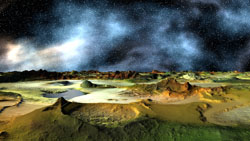Martian entry technologies
'Technologies for safe and controlled Martian entry' (SACOMAR) is an EU-funded project that brought together a number of scientists from Europe and Russia to brainstorm the challenges of a Martian entry/landing. The project objectives revolved around the experimental and numerical study of gas–surface interaction phenomenon known to occur on the surface of a spacecraft as it enters the atmosphere. This phenomenon is called shock induced high temperature effects in the hypersonic flight regime of the spacecraft. Aside from the scientific context of the project, the consortium managed to attain other goals promoting greater cohesion between consortium members. These included effective legal, financial and administrative management procedures. Excellent technical coordination, allowing greater interaction between modelling, numerical and experimental activities was another objective. To obtain greater clarity of this process, a series of physical models was derived from experimental data based on a Martian-like atmosphere. This will allow for enhanced understanding of a spacecraft's aero-thermal load upon entering the atmosphere. This is important as the differences between Earth and Martian atmospheres, their density and pressure variances, present enormous challenges for spacecraft stability and surface chemistry properties. Given that there were five tasks successfully carried to term, the consortium's efforts should go a long way in boosting future attempts to land a spacecraft on Mars. Notwithstanding the importance of future space exploration, Sacomar achievements show the importance of scientific cohesion and cooperation.



